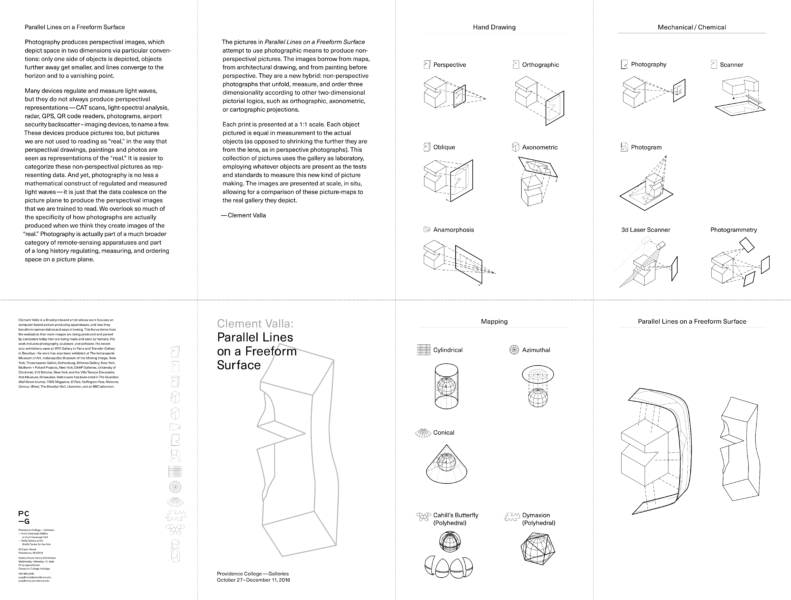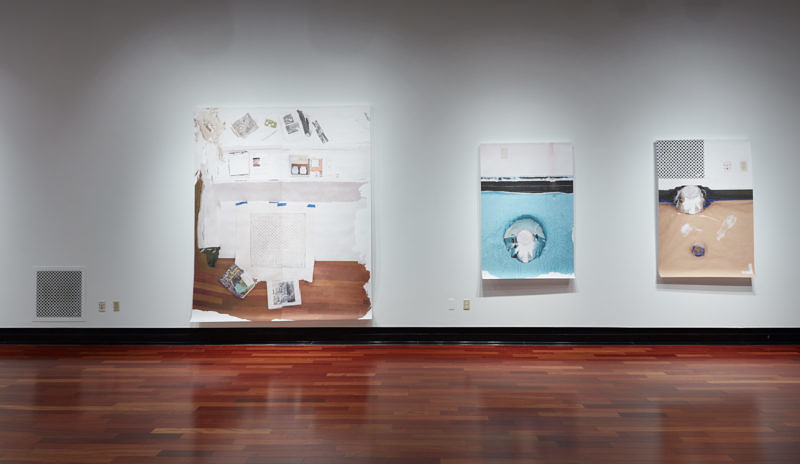Inkjet on linen
2016, Providence College Galleries, Providence RI
Photography produces perspectival images, which depict space in two dimensions via particular conventions: only one side of objects is depicted, objects further away get smaller, and lines converge to the horizon and to a vanishing point.
Many devices regulate and measure light waves, but they do not always produce perspectival representations—CAT scans, light-spectral analysis, radar, GPS, QR code readers, photograms, airport security backscatter–imaging devices, to name a few. These devices produce pictures too, but pictures we are not used to reading as “real,” in the way that perspectival drawings, paintings and photos are seen as representations of the “real.” It is easier to categorize these non-perspectival pictures as representing data. And yet, photography is no less a mathematical construct of regulated and measured light waves—it is just that the data coalesce on the picture plane to produce the perspectival images that we are trained to read. We overlook so much of the specificity of how photographs are actually produced when we think they create images of the “real.” Photography is actually part of a much broader category of remote-sensing apparatuses and part of a long history regulating, measuring, and ordering space on a picture plane.
The pictures in Parallel Lines on a Freeform Surface attempt to use photographic means to produce nonperspectival pictures. The images borrow from maps, from architectural drawing, and from painting before perspective. They are a new hybrid: non-perspective photographs that unfold, measure, and order three dimensionality according to other two-dimensional pictorial logics, such as orthographic, axonometric, or cartographic projections.
Each print is presented at a 1:1 scale. Each object pictured is equal in measurement to the actual objects (as opposed to shrinking the further they are from the lens, as in perspective photographs). This collection of pictures uses the gallery as laboratory, employing whatever objects are present as the tests and standards to measure this new kind of picture making. The images are presented at scale, in situ, allowing for a comparison of these picture-maps to the real gallery they depict.












